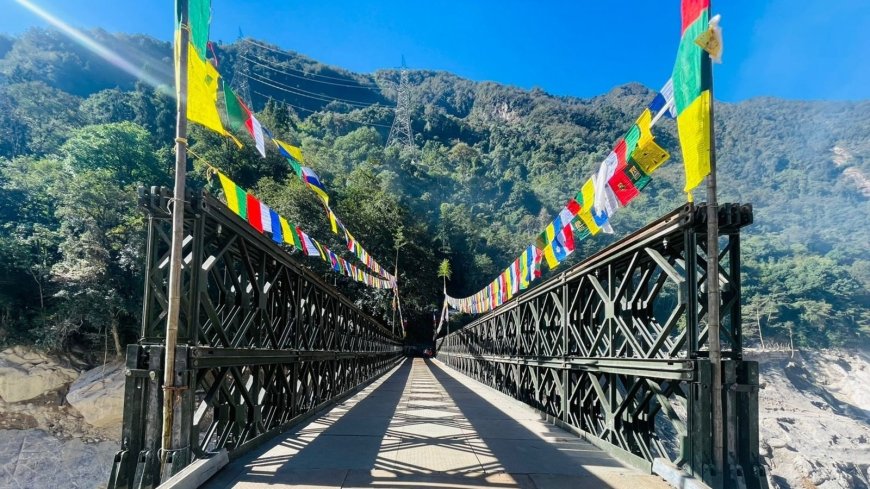Sikkim's Monasteries: A Journey Through Spiritual and Historical Sites

Sikkim, nestled in the eastern Himalayas, is a land of enchanting beauty, rich traditions, and profound spirituality. The state's monasteries, steeped in centuries of history and culture, offer a glimpse into the deep spiritual heritage of this Himalayan gem. A 5 days Sikkim trip provides the perfect opportunity to explore these sacred sites, each brimming with its own unique story and significance. In this article, we'll embark on a journey through some of Sikkim’s most revered monasteries, delving into their historical importance and spiritual essence.
1. Rumtek Monastery: The Jewel of Sikkim's Buddhist Heritage
The Rumtek Monastery, also known as the Dharma Chakra Centre, is the largest and most significant monastery in Sikkim. Located about 24 kilometers from Gangtok, the state capital, Rumtek is a major center for the Kagyu sect of Tibetan Buddhism. Founded in the 16th century by the 9th Karmapa, the monastery has become a pilgrimage site for Buddhists from all over the world.
Rumtek's architecture is a blend of traditional Tibetan and modern influences, featuring intricate murals, grand prayer halls, and a stunning golden stupa. The monastery's main prayer hall is adorned with exquisite thangkas (Tibetan scroll paintings) and statues of various Buddhist deities. Visitors can witness monks engaged in vibrant prayer ceremonies and traditional rituals, offering a profound glimpse into the spiritual practices of Tibetan Buddhism.
The monastery also houses a large collection of Buddhist scriptures and artifacts, making it a treasure trove for scholars and enthusiasts. The serene atmosphere and breathtaking views of the surrounding mountains add to the spiritual ambiance of the place, making it a must-visit destination on any 5 days Sikkim trip.
2. Enchey Monastery: A Historical Gem in Gangtok
Perched on a hilltop overlooking Gangtok, Enchey Monastery is an important center of Nyingma Buddhism, one of the oldest schools of Tibetan Buddhism. Founded in the early 19th century by Lama Druptob Karpo, Enchey Monastery is renowned for its spiritual significance and architectural beauty.
The monastery's architecture is characterized by its traditional Tibetan design, with intricately carved wooden pillars and vibrant prayer flags fluttering in the breeze. Inside, visitors can admire colorful murals depicting various Buddhist deities and scenes from Buddhist mythology. The monastery's prayer hall is adorned with thangkas and statues, creating a serene and contemplative atmosphere.
Enchey Monastery is also known for its annual chaam dance festival, which takes place in January. During this festival, monks perform traditional dances and rituals, reenacting ancient Buddhist legends and myths. The lively and vibrant performances offer a unique cultural experience for visitors, making Enchey Monastery a highlight of a 5 days Sikkim trip.
3. Pemayangtse Monastery: A Spiritual Retreat in the Hills
Located about 140 kilometers from Gangtok, Pemayangtse Monastery is one of the oldest and most revered monasteries in Sikkim. Established in the early 18th century by Lama Lhatsun Chempo, the monastery is a significant center for the Nyingma sect of Tibetan Buddhism.
Pemayangtse Monastery is known for its unique architecture and stunning location. Perched on a hill overlooking the picturesque town of Pelling, the monastery offers breathtaking views of the surrounding mountains and valleys. The monastery's design is characterized by its traditional Tibetan style, with intricately carved wooden doors and vibrant prayer flags.
Inside, visitors can explore the monastery's impressive collection of Buddhist artifacts and scriptures, including ancient thangkas and statues. The monastery's main prayer hall is adorned with intricate murals depicting various Buddhist deities and scenes from Buddhist mythology. The tranquil surroundings and serene atmosphere make Pemayangtse Monastery a perfect place for meditation and reflection, making it an essential stop on a 5 days Sikkim trip.
4. Sangacholing Monastery: An Ancient Monastic Retreat
Sangacholing Monastery, located on a hilltop near Pelling, is one of the oldest and most historically significant monasteries in Sikkim. Established in the early 17th century by Lama Lhatsun Chempo, the monastery is renowned for its historical importance and spiritual significance.
The monastery's architecture is characterized by its traditional Tibetan design, with intricately carved wooden pillars and vibrant prayer flags. Inside, visitors can admire colorful murals depicting various Buddhist deities and scenes from Buddhist mythology. The monastery's main prayer hall is adorned with thangkas and statues, creating a serene and contemplative atmosphere.
Sangacholing Monastery is also known for its annual festival, which takes place in October. During this festival, monks perform traditional dances and rituals, reenacting ancient Buddhist legends and myths. The lively and vibrant performances offer a unique cultural experience for visitors, making Sangacholing Monastery a highlight of a 5 days Sikkim trip.
5. Phodong Monastery: A Hidden Gem of Sikkim
Phodong Monastery, located about 38 kilometers from Gangtok, is a lesser-known but equally significant monastery in Sikkim. Founded in the early 18th century by Lama Lhatsun Chempo, the monastery is a center for the Kagyu sect of Tibetan Buddhism.
The monastery's architecture is characterized by its traditional Tibetan design, with intricately carved wooden pillars and vibrant prayer flags. Inside, visitors can explore the monastery's impressive collection of Buddhist artifacts and scriptures, including ancient thangkas and statues. The monastery's main prayer hall is adorned with intricate murals depicting various Buddhist deities and scenes from Buddhist mythology.
Phodong Monastery is also known for its annual festival, which takes place in November. During this festival, monks perform traditional dances and rituals, reenacting ancient Buddhist legends and myths. The lively and vibrant performances offer a unique cultural experience for visitors, making Phodong Monastery a hidden gem of a 5 days Sikkim trip.
6. Khecheopalri Monastery: A Sacred Site of Pilgrimage
Khecheopalri Monastery, located near the sacred Khecheopalri Lake, is a significant pilgrimage site in Sikkim. The monastery is dedicated to the worship of Tara, a revered Buddhist goddess known for her compassion and protection.
The monastery's architecture is characterized by its traditional Tibetan design, with intricately carved wooden pillars and vibrant prayer flags. Inside, visitors can explore the monastery's impressive collection of Buddhist artifacts and scriptures, including ancient thangkas and statues. The monastery's main prayer hall is adorned with intricate murals depicting various Buddhist deities and scenes from Buddhist mythology.
Khecheopalri Monastery is also known for its annual festival, which takes place in June. During this festival, monks perform traditional dances and rituals, reenacting ancient Buddhist legends and myths. The lively and vibrant performances offer a unique cultural experience for visitors, making Khecheopalri Monastery a sacred site of pilgrimage on a 5 days Sikkim trip.
Conclusion
Sikkim's monasteries offer a profound journey into the spiritual and historical heart of the region. From the grand Rumtek Monastery to the serene Khecheopalri Monastery, each site provides a unique glimpse into the rich tapestry of Sikkim's Buddhist heritage. A 5 days Sikkim trip is an ideal way to explore these sacred sites, allowing visitors to immerse themselves in the spiritual and cultural essence of this Himalayan paradise. Whether you are seeking spiritual enlightenment or simply wish to experience the beauty and tranquility of Sikkim's monasteries, this journey promises to be an enriching and unforgettable experience.
What's Your Reaction?
 Like
0
Like
0
 Dislike
0
Dislike
0
 Love
0
Love
0
 Funny
0
Funny
0
 Angry
0
Angry
0
 Sad
0
Sad
0
 Wow
0
Wow
0















































